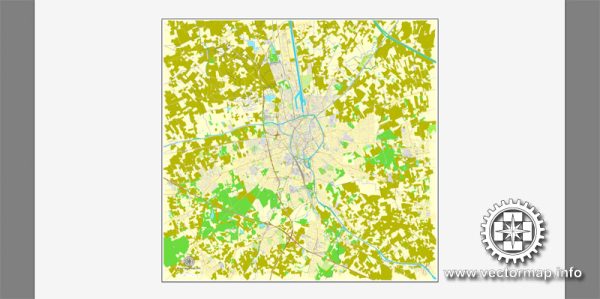Bruges, located in northwest Belgium, is a historic city with a rich and fascinating history of urban development. Here is an overview of its urban development history:
- Early Settlement:
- Bruges’ history can be traced back to the Roman period when it was a small settlement called “Bryggia” or “Brugge” situated along the banks of the River Reie.
- By the 9th century, Bruges had become a thriving trading post, and it eventually grew into a significant trading center for goods moving between the North Sea and the interior of Europe.
- Medieval Prosperity:
- In the late Middle Ages, Bruges became one of the most important and wealthy cities in Europe.
- The city’s prosperity was largely due to its strategic location and the development of a sophisticated network of canals that facilitated trade and commerce. It was known as the “Venice of the North.”
- Gothic Architecture:
- Bruges boasts numerous examples of Gothic architecture from this period, including the iconic Belfry of Bruges, St. Saviour’s Cathedral, and the Basilica of the Holy Blood. These architectural marvels stand as a testament to the city’s medieval grandeur.
- Decline and Revival:
- As trade routes shifted, and the silting of the Zwin River began to affect Bruges’ accessibility to the sea, the city’s economic importance waned in the late Middle Ages.
- Bruges entered a period of decline during the 16th century but was later revitalized in the 19th century, thanks in part to tourism and a renewed interest in preserving its historic architecture.
- Preservation Efforts:
- In the late 19th century, Bruges became a focal point of the architectural preservation movement in Belgium.
- Efforts were made to restore and maintain the city’s historic buildings, canals, and streetscapes, helping to preserve its medieval character.
- UNESCO World Heritage Site:
- In 2000, the historic city center of Bruges was designated a UNESCO World Heritage Site in recognition of its exceptional architectural and cultural heritage.
- The city’s well-preserved medieval buildings, canals, and layout contribute to its unique character.
- Modern Development:
- Today, Bruges has managed to maintain its medieval charm while adapting to modern needs and demands.
- The city’s economy is now driven by tourism, and its well-preserved heritage, picturesque canals, and cobbled streets continue to attract visitors from around the world.
Bruges’ history of urban development is a remarkable tale of a medieval trading powerhouse that evolved, declined, and then revived as a beautifully preserved city that offers a window into Europe’s past. The city’s historical significance and architectural treasures make it a must-visit destination for history and architecture enthusiasts.


 Author: Kirill Shrayber, Ph.D.
Author: Kirill Shrayber, Ph.D.